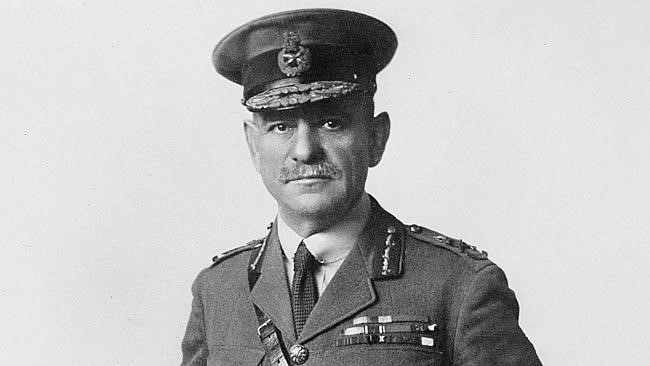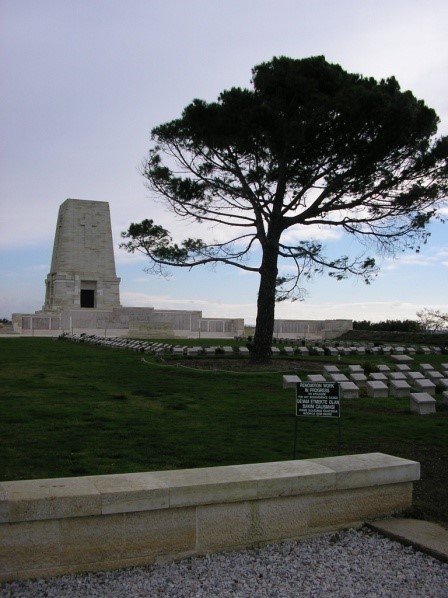ANZAC – Australian and New Zealand Army Corps – is a word that evokes strong emotions for Australians and New Zealanders. It is not only part of our history that we learn in school and a holiday that we remember. It is much more than that. It is something deeply etched into the Australian consciousness that most of us cannot even explain.
 I came across a quote that talked about a ‘something more’ to do with Anzac Day. The quote was from Sir John Monash1, given on April 26th 1930.
I came across a quote that talked about a ‘something more’ to do with Anzac Day. The quote was from Sir John Monash1, given on April 26th 1930.
“I want to point out that a public celebration like we had yesterday (Anzac Day), is very much wider and has a deeper significance than appears on the surface. It is true that it is intended as an act of remembrance of our comrades who have gone, as an act of homage to their memory, and an act of pride in the achievements of Australia, but it is something more than that. It is an occasion for elevating the public spirit and public sentiment. We are gathering together our citizens in hundreds of thousands, who have presented to them noble ideals and noble thoughts, and they are animated by common ideals of worthy purpose. Heaven knows we need such stimulation today. That is why I have tried to throw myself whole-heartedly into another project – the great memorial known as the Shrine of Remembrance. I think that, too, when it is completed in all its glory and grandeur, will become an object of reverence to the community, and will have an influence which will be uplifting and will band the community together in elevated thought and common national purpose.”2 (emphasis added)
People who have no interest in history take their children to Anzac Day marches. Some 40,000 people flock to Gallipoli each year to commemorate the battles fought there and many, who would never think of themselves as religious, consider this to be a spiritual experience. Even though all the World War 1 veterans have passed on, Anzac Day continues to gain in popularity, not diminish. Hundreds of thousands attended dawn services for the centenary of Gallipoli in 2015 – 120,000 in Canberra and 85,000 in Melbourne (despite rain), just to mention two places. What is this phenomenon that touches the Australian and New Zealand heart and why does it stir us?
 ANZAC commemorations largely focus on remembering the lives lost and the price paid by war. This website will emphasise the victories won, the character traits that brought those victories, and the part the ANZACs played in the bigger picture. It will explore the place the ‘noble ideals and noble thoughts’ connected to the ANZAC tradition, the ‘common ideals of worthy purpose’ Monash mentioned and how these ‘can band the community together in elevated thought and common national purpose.’
ANZAC commemorations largely focus on remembering the lives lost and the price paid by war. This website will emphasise the victories won, the character traits that brought those victories, and the part the ANZACs played in the bigger picture. It will explore the place the ‘noble ideals and noble thoughts’ connected to the ANZAC tradition, the ‘common ideals of worthy purpose’ Monash mentioned and how these ‘can band the community together in elevated thought and common national purpose.’
The ANZAC tradition is a key to the heart of the nation. War is never pleasant and always costly, but it changes the course of history for better or for worse. While schools and the media focus on the events in Turkey and the Western Front in France and Belgium, they mostly ignore the amazing success story of the Middle Eastern campaign fought in the desert sands of the Sinai and the stony mountains and plains of Palestine, Syria and the steep Jordan valley. The Allied troops literally re-wrote the political map of the Middle East by defeating the same Ottoman Turkish army that they had failed to rout on their home soil in Gallipoli. More often than not, the ANZACs were at the forefront of the breakthroughs that pushed back the enemy, eventually leading to the formation of the nations of Iraq, Syria, Lebanon, Jordan and Israel. Turkey also emerged from the war as a modernised nation. Let’s acknowledge and remember the vital contribution our troops made and discover how this is tied to a greater purpose.
The Middle Eastern campaign began in August, 1916 and continued to the end of October 1918. It was not one battle; it was a number of conflicts spread over two and a half years. We are now approaching the centenary of this campaign. The call is going out for us to have ‘pride in Australia’s achievements’ through the ANZAC victories, turn the national consciousness to ‘noble thoughts’ instead of sinking even deeper into the abyss of immorality, selfishness and paganism, and ‘band the community together in elevated thought and common national purpose’ as we celebrate our victories, not just remember our losses as part of the ANZAC commemorations. Our unique identity and national purpose has been kept in a ‘down under’ mentality. It is time to shake off the shackles of our convict past and lift up our heads.
Endnotes:
- General Sir John Monash is considered one of the best Allied generals of World War I and the most famous commander in Australian history. He commanded all Australian troops on the Western Front in Europe during the closing months of World War 1.
- Warhaft, S., Well May We Say: The Speeches that Made Australia, Black Inc, 2004, 90-91
Pictures:
- Lt Gen Sir John Monash – Australian War Memorial photo - cropped. Portrait photo by Swaine. https://www.awm.gov.au/collection/A02697/
- Lone Pine cemetery, Gallipoli – Jill Curry

